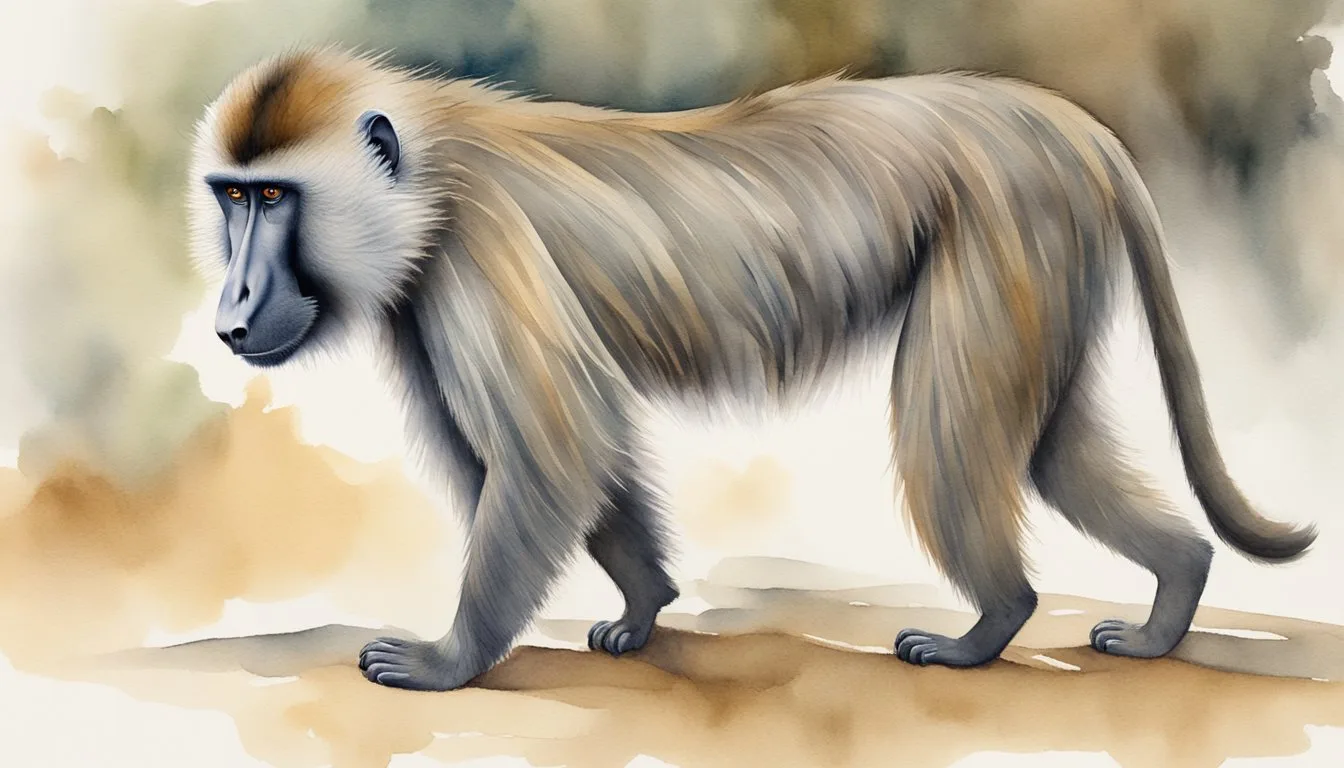Baboon Basics

Baboons are among the most recognizable primates in Africa and Arabia, known for their significant roles in their ecosystems and intriguing societal structures. They are members of the Old World monkeys, a fact that signals their place in the evolutionary history of primates.
Species and Distribution
Baboons are classified under the genus Papio, which includes six species: the hamadryas baboon, the Guinea baboon, the olive baboon, the yellow baboon, the Kinda baboon, and the chacma baboon.
- Africa is home to all of these species, with each adapting to different regions across the continent.
- The hamadryas baboon also resides in Arabia.
- These baboons live in various habitats ranging from tropical forests to arid grasslands and savannas, reflecting their adaptability.
Physical Characteristics
Baboons are some of the world’s largest monkeys. The physical size of baboons varies greatly among the species:
- The chacma baboon, for instance, is the largest, with males averaging around 30 kg (66 pounds).
- On the smaller end of the scale, the hamadryas baboon has males averaging about 17 kg.
Their robust physiques and distinct features, like their long, dog-like muzzles and powerful jaws, make them formidable species within their range. Baboons are also known for their complex and highly structured social behaviors, which have been a focal point of numerous studies into primate societies.
Behavior and Ecology

Baboons are fascinating animals with complex social structures and behaviors that are crucial for their survival in diverse habitats. They are found across various parts of Africa and even into parts of the Arabian Peninsula, adapting to different ecological systems from savannahs to forests.
Social Structure and Diet
Baboons live in groups known as troops, which can contain anywhere from a few individuals to hundreds. The size of the troop helps in defending against predators such as leopards, lions, and hyenas. Within these troops, a hierarchy exists, usually with a dominant male leading the group. The social life of a baboon troop is complex, involving a range of behaviors from grooming to foraging together. Baboons are omnivorous, eating a diet comprising fruits, seeds, roots, and occasionally small animals. They have adapted to find water in their arid habitats, although they can survive for long periods without it by consuming moisture-rich foods.
- Diet: Omnivorous; includes fruits, seeds, roots
- Predators: Leopards, lions, hyenas
- Social groups: Troops with complex hierarchy
Reproduction and Lifespan
The reproduction of baboons is regularly monitored by the dominant males, who mate with the females in their troop. Female baboons have a gestation period of about six months and usually bear a single infant. Offspring are cared for attentively by their mothers and other females in the troop. In the wild, baboons can live up to 30 years, which is relatively long compared to many other species. Their lifespan is influenced by their ability to avoid predators and their social status within the troop.
- Gestation Period: Approximately six months
- Lifespan: Up to 30 years in the wild
- Offspring Care: Maternal and communal
Interactions with Humans and Conservation
Baboons often come into contact with humans, sometimes causing conflicts, especially when they are considered pests for raiding crops. Due to their adaptability, baboons are not currently under severe threat; however, habitat loss and hunting have put some pressure on their populations. The IUCN lists most baboon species as Least Concern, but their conservation status could change if current threats are not managed effectively. Ongoing conservation efforts aim to strike a balance between baboon populations and human activities to ensure the survival of these adaptable primates.
- Human Interactions: Crop raiding, habituation
- Conservation Status: Least Concern (IUCN for most species)
- Conservation Efforts: Managing human-wildlife conflict, habitat protection
For deeper insights into baboon behavior and ecology, particularly how they can inform us about early human ancestors, see the study on Baboon perspectives on the ecology and behavior of early human ancestors. The complex interactions baboons have with other species, including humans, are detailed further in a fact sheet about the Hamadryas baboon, and more information on their social systems and species from studies of baboons can be found here.

